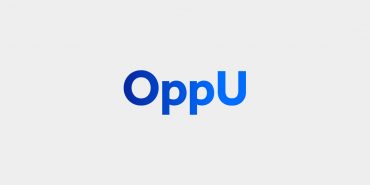How to Budget Effectively and Stop Living Paycheck to Paycheck

Living paycheck to paycheck means that your income is used up entirely between paydays, leaving no room for savings or emergencies.
Struggling to save beyond monthly expenses is unfortunately common, with 78% of Americans living paycheck to paycheck in 2023. As a result, many Americans say they would be unable to cover a $500 emergency expense without borrowing money. While living paycheck to paycheck is undeniably stressful, it is possible to escape the cycle with smart personal financial habits.
By establishing and sticking to a budget that cuts out unnecessary spending, you can start building up an emergency fund in case of unanticipated expenses. What’s more, you can even start saving for long-term financial goals like retirement. In this article, we’ll walk through some important money management tips to escape the paycheck-to-paycheck cycle, allowing you to reduce money-related stress and lead a healthier financial life.
Key takeaways:
- Establishing a proper budget requires a detailed understanding of your monthly income and expenses.
- Identifying and eliminating unnecessary expenses can free up space in your budget for saving.
- Setting realistic financial goals, including a mix of short- and long-term ones, can help motivate you to keep practicing good habits.
- Building an emergency fund can allow you to weather unanticipated expenses without turning them into financial crises.
- Automating saving and bill-paying can help make it easier to stick with financial goals.
- Leveraging budgeting apps and other digital tools can make it simpler to accurately track your spending and monitor progress towards goals.
Understanding your income and expenses
The first step in escaping the paycheck-to-paycheck cycle is to figure out where your money is going each month. Think of this process as creating a backward-looking budget, helping you understand your existing spending habits. Before starting, make sure to collect bank and credit card statements for the past few months.
Determine your monthly income…
For salaried workers, start by determining your regular monthly income after taxes and deductions are taken out. For freelancers and other workers with an irregular income, take a conservative estimate of your average monthly income. Next, add in any income you earn from side hustles or part-time work after accounting for taxes.
…and your monthly expenses.
Once you’ve established your income, it’s time to map out your expenses. It can help to organize your expenses into fixed and variable ones. Fixed expenses are those that you have no capacity to reduce in the immediate term, such as your monthly rent. Variable expenses are those that you can exert more influence over, such as the amount you spend dining out.
If it helps, you can further refine your expenses by category. Determine how much of your transportation expenses go toward gas vs. public transport, for instance. To account for the allure of impulse purchases, you might also find it beneficial to try and identify how much you spend each month on one-off buys. This tactic can also help you catch overlooked expenses you weren’t aware of.
“After writing down every transaction, many people realize they’re spending way more than they thought on all the small things, such as coffees, nights out, and parking fees,” says J. Michael Collins, faculty director at the Center for Financial Security at the University of Wisconsin-Madison. “It really catches up.”
Establish your monthly cash flow.
Once you’ve organized your total monthly income and expenses, you can put the two together to establish a clear picture of your monthly cash flow. If you’re lucky, you might realize that you have some more cash left over than you anticipated. Regardless, this process will serve as the basis for a forward-looking budget, helping to strip out unnecessary monthly spending.
Reducing unnecessary spending
Now that you’ve established a firm picture of your finances, it’s time to establish a budget for the months moving forward. A budget is an indispensable tool for establishing a plan to reduce unnecessary spending without resorting to guesswork.
“When you’re living from paycheck to paycheck, a budget can help tell your money where it’s going instead of wondering where your money went,” says McKenzie Walsh, a Certified Personal Financial and HUD Housing Counselor.
To trim your budget down to the essentials, you’ll need to start by identifying which of your fixed and variable expenses can realistically be reduced.
Reducing fixed & variable expenses.
The first place to identify unnecessary spending is within your large fixed expenses. If your rent or mortgage is higher than what you can realistically afford, for instance, you might want to consider downsizing or moving in with roommates. If you’re navigating high-interest loans, consider looking into refinancing, which could help you reduce your monthly payment.
The next step is to determine areas of improvement in terms of discretionary expenses. Cutting down the number of entertainment subscriptions you have, for example, can free up extra cash each month. If you have a habit of impulse buying, limiting yourself to essential items can also help you avoid purchases you can’t afford.
Forming new money habits.
The formation of new money habits can go a long way toward reducing unnecessary spending. Establishing a few days in the week as “no-spend” days, for instance, can help break the regularity with which we dip into our wallet for a cup of coffee or a quick snack.
As you pull back on spending, though, don’t be afraid to splurge every once in a while on expenses that you truly can afford. If you’re used to shelling out money daily, depriving yourself too harshly can lead to ‘binge spending’ behavior. Just ask writer Jennifer Billock, who ended up impulse buying a puppy after an extended no-spend challenge.
Setting realistic financial goals
While escaping the paycheck-to-paycheck cycle is a valuable financial aim in itself, it is also a somewhat abstract goal. To motivate yourself to continue practicing sound financial habits, it can help to establish concrete, realistic goals that you’d like to work toward. “If there’s something to visualize like buying a home or having savings, you’ll try to continue the process,” Walsh says.
Many people benefit from establishing a healthy mix of short- and long-term goals. Short-term goals, such as paying off credit card debt, can provide quick wins that help you build momentum on your financial journey. Long-term goals, like saving for a home, can represent life-changing milestones that take years to achieve.
The SMART goals framework
Not all goals are created equal. Some are ill-defined, which can make achievement conditions confusing. Others can be too long-lasting, allowing a built-in excuse for delaying action.
The SMART goals framework provides a popular format for clearly establishing goals that motivate action. The acronym captures all of the features a well-defined goal should have:
- Specific – You should clearly state the goal.
- Measurable – You should be able to meaningfully track progress.
- Achievable – Your goal should be realistic (but ambitious).
- Relevant – Your goal should make sense for your life circumstances and priorities.
- Time-bound – You should establish a clear timeline in which the goal will be achieved.
According to academic research, goals that satisfy all these criteria are more likely to be achieved. A SMART goal, for instance, might read: “I will save $500 each month for the next six months to establish an emergency fund.”
Prioritizing financial goals
While establishing goals is a valuable way to motivate yourself to stick to a financial plan, it is also important that you effectively prioritize those goals.
Generally speaking, paying off high-interest debt like credit cards should be your first financial priority. Techniques like the debt snowball or debt avalanche method can be valuable strategies to pay down debt. For lower interest debt like mortgages, it often makes more sense to incorporate repayment as part of a monthly budget over a multi-year period.
Once you’ve paid off high-interest debt, establishing an emergency fund for unanticipated expenses is often considered the next highest priority, a subject we’ll turn to now.
Building an emergency fund
Emergency funds are an essential tool to prevent financial emergencies from turning into financial catastrophes. The idea behind an emergency fund is to keep some cash socked away to pay for unanticipated expenses in the future. By having an emergency fund ready, you can prevent the need to pursue high-interest borrowing to make ends meet.
Typically, experts recommend keeping three to six months’ worth of living expenses in your emergency fund. While that might seem like a huge amount if you’re living paycheck-to-paycheck, it’s possible to start saving for emergencies with the budgeting tips we’ve discussed combined with a few simple strategies.
How to start saving for an emergency fund.
As you begin accumulating an emergency fund, it can help to start small. Saving just $50 or $100 a month can make a significant difference over time while still feeling achievable. As you gain more control over your budget and reduce unnecessary spending, you can increase the size of your monthly savings to build up your emergency fund faster.
You can also open a new account at a different bank or credit union to help you reach this goal. Consider setting up automated transfers to this account after your monthly paycheck lands. Keeping your emergency fund in a separate account from your typical bill-paying account can make it easier to avoid dipping into your savings on an impulse.
“Don’t make it so easy to hit transfer with the click of a button,” Walsh says. “It can help you feel like you’re a bit more in control of your money, but still putting a cap on overspending and actually save money.”
When should you use an emergency fund?
As the name suggests, the money in your emergency fund should only be used for genuine emergencies. These are unanticipated bills that need to be paid quickly to prevent significant consequences, such as urgent car repairs or medical bills. Your emergency fund can also keep you afloat for a short while in the event of a job loss, giving you time to look for new work.
It can be tempting to use your emergency fund on non-urgent expenses like vacations or indulgent purchases. It’s best to keep the money for these goals in a separate savings account, however, to ensure that your emergency fund is there when you truly need it.
Automating savings and bill payments
In your journey to escape the paycheck-to-paycheck cycle, automation can be one of the most powerful tools in your arsenal. By automating monthly bill-paying and savings, you not only remove the temptation to stray from your financial plan but also avoid the headaches involved in forgetting to make a planned transfer.
Automated monthly transfers to a savings account, for instance, can be scheduled for the day after your regular payday. This helps ensure that you ‘pay yourself first’ before spending your cash on other expenses. Similarly, setting up automatic credit card payments can help you avoid carrying a balance month-to-month, saving money on interest and fees.
How to set up automatic transfers
The process for setting up automatic transfers will vary depending on the specific platform you’re using. Typically, though, you’ll need to set up an automated ACH transfer on the destination account (credit card, savings account, etc.) to pull money from the origin account (usually a checking account). Generally, the process looks like this:
- Decide the amount of money you want to transfer.
- Determine the frequency of transfers (monthly, biweekly, etc.).
- Determine if the transfers should end on a specific date or until you cancel them.
- Review your bank’s non-sufficient funds and overdraft terms to make sure you’re comfortable with the potential fees.
- Submit your automated transfer request.
After setting up automated transfers, make sure to keep an eye on your account activity in the following month to ensure that they’re working properly.
Using budgeting tools and apps
Another powerful way to make your savings journey more successful is to leverage the power of apps and other digital financial tools. In addition to the many apps that track spending, there are others that can help you monitor your budget or check progress on financial goals. Here are a few of the most popular apps to consider:
- Simplifi. Simplifi, a personal financial app from Quicken, features a wide range of tools including spending tracking and debt monitoring. This app is especially useful for sharing your budget with another person, like a partner or a financial advisor.
- YNAB. YNAB (You Need a Budget) is a budgeting app that specializes in ‘zero-based budgeting,’ which focuses on accounting for each dollar of monthly spending. YNAB is worth considering if you’re looking for a rigorous budgeting methodology with a strong track record.
- EveryDollar. EveryDollar, a personal financial app from Ramsey Solutions, offers diverse features including budget tracking and net worth monitoring. The app’s ability to plan spending based on paydays might be particularly helpful for those trying to escape the paycheck-to-paycheck cycle.
How do I choose a budgeting app?
With so many financial apps to choose from, it can be hard to pick a single one. The good news is that with the ubiquity of technologies like Plaid, linking your accounts and setting up a new budgeting app is a relatively painless process. If you find that your first choice of budgeting app doesn’t align with your financial style, you can always change your mind later on.
In some cases, you might realize that the best choice for you is no app at all. Some individuals find that they have the most budgeting success with a manual digital spreadsheet or even old-school solutions like pen-and-paper and the envelope system.
How to use a budgeting app effectively
To use a budgeting app effectively, it’s important to keep the app updated throughout the month as your spending progresses. While most apps offer automated category tracking for credit card purchases, you may need to manually enter cash expenses. Briefly checking the app at a set time each day can help ensure that expenses are being tracked appropriately.
It can also be helpful to schedule a regular check-in on a weekly or monthly basis. During this longer review, evaluate whether your spending is in line with your budget and measure progress toward goals. Remember, while an app can make things easier, budgeting and saving is still a process that takes discipline and hard work.
Conclusion
While living paycheck-to-paycheck can be stressful, it doesn’t need to last forever. Today, we reviewed some key strategies for establishing a budget and cutting down on unnecessary expenses to build up an emergency fund. We also reviewed some practical personal financial tips including goal-setting, the power of automated transfers, and how to pick a helpful budgeting app.
The journey out of the paycheck-to-paycheck cycle won’t always be easy. Sticking to a budget and changing your spending habits can be a frustrating process requiring continuous discipline. Over the long term, however, these financial habits can lead to significant and rewarding benefits, allowing you to achieve long-term goals and confidently manage financial emergencies.

Michael Collins is the Fetzer Family Chair of Consumer Finance at the University of Wisconsin-Madison. He is the Faculty Director of the Center for Financial Security and a professor at the La Follette School of Public Affairs. Collins is editor of the book “A Fragile Balance: Emergency Savings and Liquid Resources for Low-Income Consumers,” and “Financial Capability for Helping Professionals.”

McKenzie Walsh is a Certified Personal Financial and HUD Housing Counselor. Walsh received her bachelor’s degree from Utah State University in family consumer sciences with an emphasis in family finance. Coaching and educating individuals and families in their personal finances is her passion.
Please note the below article contains links to external sites outside of OppU and Opportunity Financial, LLC. These sources, while vetted, are not affiliated with OppU. If you click on any of the links you will be sent to an external site with different terms and conditions that may differ from OppU’s policies. We recommend you do your own research before engaging in any products or services listed below. OppU is not a subject matter expert, nor does it assume responsibility if you decide to engage with any of these products or services.




